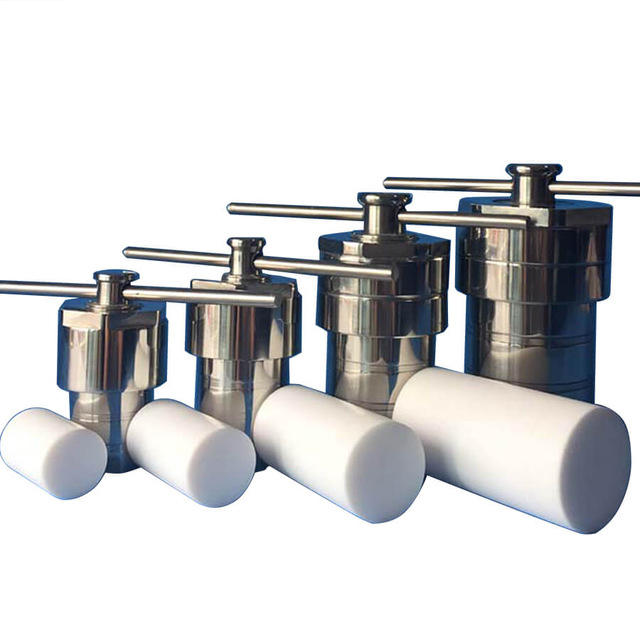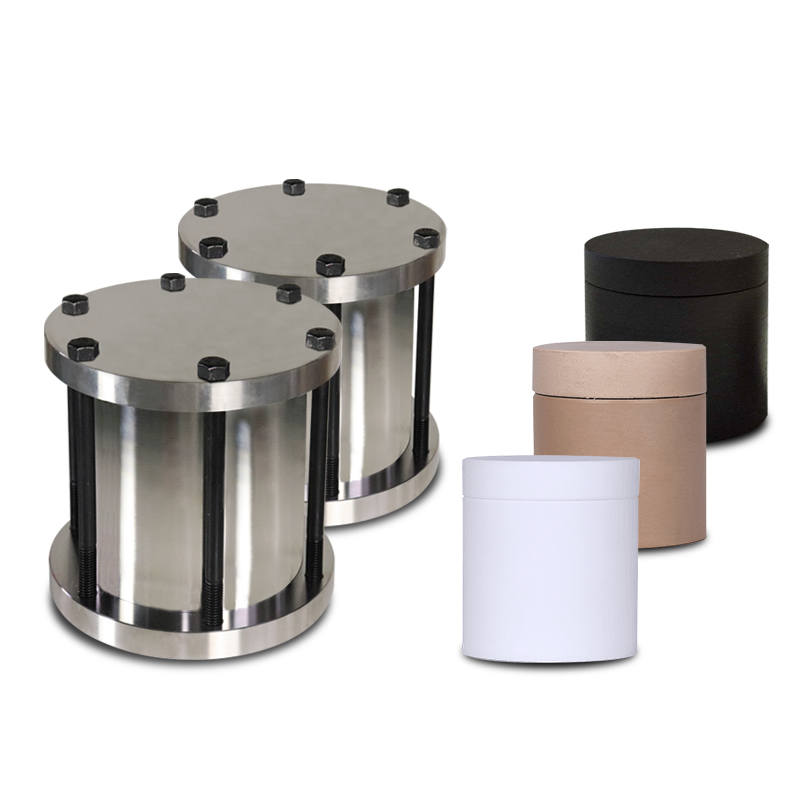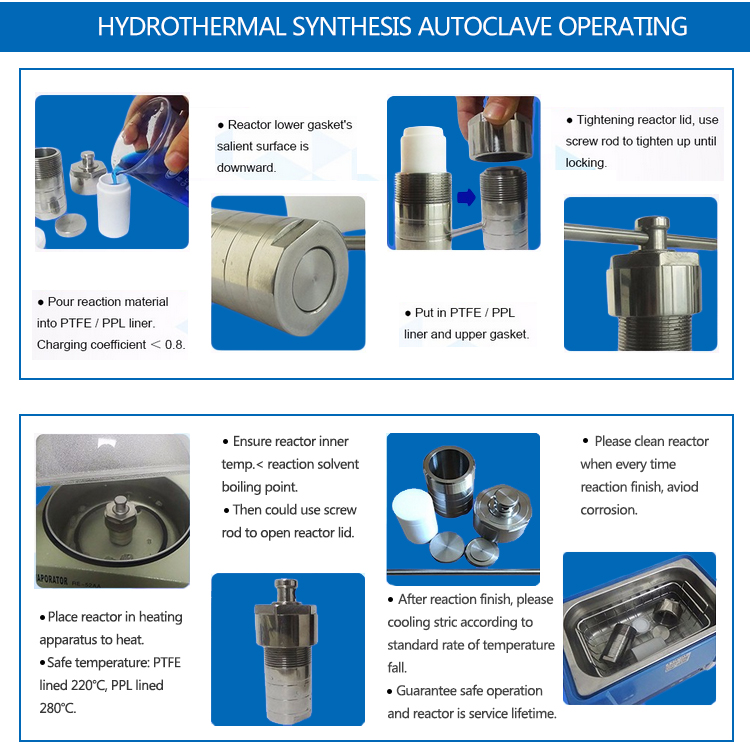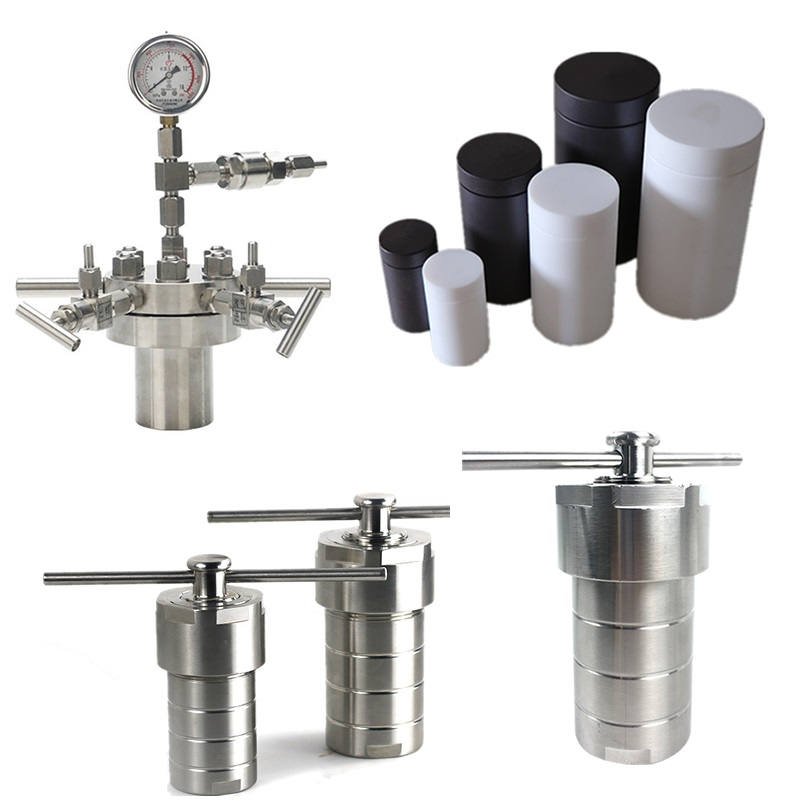The stainless steel reactor is a kind of reaction device mainly made of stainless steel. It is mainly composed of the tank, jacket and stirring system. The parts exposed to materials all adopt high-quality stainless steel, such as SUS304 and SUS316L, which conforms to the GMP standard. The stainless steel reactors have a wide application areas. It is applicable for carrying out chemical reaction experiments at high temperature and high pressure used in petroleum, chemical engineering, pharmaceutical, metallurgy, science and research institutions and colleges and universities and other sectors. Both the viscous and granular materials can achieve the effect of high stirring.
how to use hydrothermal autoclave reactor Method of operation
The reaction was poured into a PTFE liner or liner within the PPL, and to ensure that the addition coefficient is less than 0.8.
Make sure the kettle under the pads in the correct position (convex side down), and then into the bush or PPL PTFE liner and the gaskets, tighten the kettle lid, then screw the kettle lid knob tight.
The hydrothermal synthesis reactor placed in a heater, in accordance with a predetermined heating rate was raised to the desired reaction temperature. (Less than a predetermined safe temperature).
When confirmation of intra-abdominal temperature below the boiling point solvents reaction system can only open the kettle lid subsequent operations. Completion of the reaction will be when its cool, but also in strict accordance with the provisions of the cooling rate operation, to facilitate safety and reactor life.
After confirming the intra-abdominal temperature below the boiling point solvents reaction system, first screw the kettle lid release knob, and then turn on the kettle li
Hydrothermal synthesis reaction vessel promptly to each use clean, so as not to rust. Kettle body, kettle lid seal line to pay particular attention to clean and prevent damage to their bruised.
Types of Stainless Steel Reactors
The above stainless steel reactors are four different kinds of products.
The first one is a stainless steel decarboxylation reactor, which is especially used to recover the residual ethanol in the CBD extraction process. A decarboxylation process can be carried out to convert CBDA to CBD and THCA to THC, while preheating raw materials for the next distillation process.
The second one is a stainless steel lifting reactor, which can realize electric lifting with mixing mechanism.
The third one is a stainless steel high pressure reactor, which is considered as a typical case of magnetic transmission device applying to reaction experiments.
The last is a desktop high pressure reactor, which is a kind of simple high pressure reactor with heating and stirring at the bottom. It has a simple and reliable structure with a small capacity.
Benefits of Stainless Steel Reactors
A stainless steel reactor can withstand both high temperature and high pressure, whose heat transfer effect is better than other kinds of reactors.
The kettle possesses the characteristics of rapid heating, high temperature resistance, corrosion resistance, sanitation, pollution free, automatic heating without boiler, and convenient use.
When using a stainless steel reactor, the shell is directly heated so that the use temperature can be reached rapidly, which is more effective and energy-saving.
To be concluded, a stainless steel reactor is an clean, high efficient and energy-saving heating device for various reaction.
Quality stainless steel kettle body 304, using a circular tongue and groove seal, manually screw sturdiness. With good sealing, high safety factor, consume less acid solvent, easy to use!
Liner made of polytetrafluoroethylene (PTFE referred to F4), which features:
1. High temperature: Temperature -200 ~ + 250 ℃;
2. Low temperature: -196 ℃ to maintain 5%;
3. corrosion resistance: resistant to acid, alkali, aqua regia and various organic solvents;
4. Insulation resistance: dielectric properties and temperature, independent of frequency;
5. High Lubrication: solid material in the lowest coefficient of friction;
6. not adhere: not adhere to any substance; strong self-lubrication: solid material friction coefficient of 0.04
7. No poison: a physiologically inert, can be implanted in the human body; anti-aging long-term use in the atmosphere
8. pollution: metal element blank value is low, the lead content of less than 10-11 g / ml, the uranium content of less than 10-12 g / ml;
9. Anti-Leak: 1.2 meters high from the ground fall, the bottle is not broken, do not fall off the cap, no damage leakage.
Para-phenylene
Hydrothermal synthesis reactor
P-phenylene Material temperature: Temperature -200 ~ + 300 ℃
Sintered at high temperature is cooled and made resistant to acid and alkali, organic solvents aqua regia
Performance is better than PTFE products more excellent high-temperature performance performance
Ultimate technology dark brown, crack-free surface appearance
high pressure hydrothermal autoclave reactor Feature
1.Anti-corrosion, no harmful substances spill, reduce pollution, use of safety.
2.Heating, after boosting, can be dissolved rapidly destructive sample under conventional conditions is difficult and the sample containing the dissolved volatile elements.
3.Beautiful appearance, reasonable structure, simple operation, short analysis time, reliable data.
4.Inside a PTFE liner, generate care, acid and alkali.
5.To replace the platinum crucible solve handling problems Dissolving trace element analysis of high purity alumina. High pressure digestion vessel used in the oven, also known as sample dissolution, pressure melting bombs, hydrothermal synthesis reactor, the digestion tank, PTFE high-pressure tank, is the determination of trace elements and trace elements sample digestion assistant. Sample pretreatment digestion of heavy metals, pesticide residues, food, mud, earth, fish, organic matter and so on.




